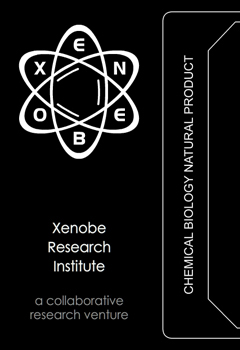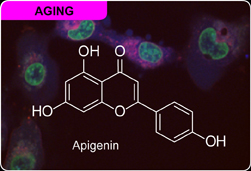

Apigenin

Caenorhabditis elegans natural chemicals in their environment and use them as cues to regulate their development. This investigation probes the mechanism of sensory trafficking by evaluating the processing of fluorescent derivatives of natural products in C. elegans. Fluorescent analogs of daumone, an ascaroside, and apigenin were prepared by total synthesis and evaluated for their ability to induce entry into a nonaging dauer state. Fluorescent imaging detailed the uptake and localization of every labeled compound at each stage of the C. elegans life cycle. Comparative analyses against natural products that did not induce dauer indicated that dauer-triggering natural products accumulated in the cuticle of the pharnyx. Subsequent transport of these molecules to amphid neurons signaled entry into the dauer state. These studies provide cogent evidence supporting the roles of the glycosylated fatty acid daumone and related ascarosides and the ubiquitous plant flavone apigenin as chemical cues regulating C. elegans developmen.. This work recently appeared in ACS Chemical Biology (read it now).
Studies are now underway in collaboration with Gage laboratory (Salk Institute) to identify the modes of action of apigenin in mammalian stem cells and brain tissues.
Copyright 2004-2012 | The Xenobe Research Institute | a California-based 501(c)(3) organization.